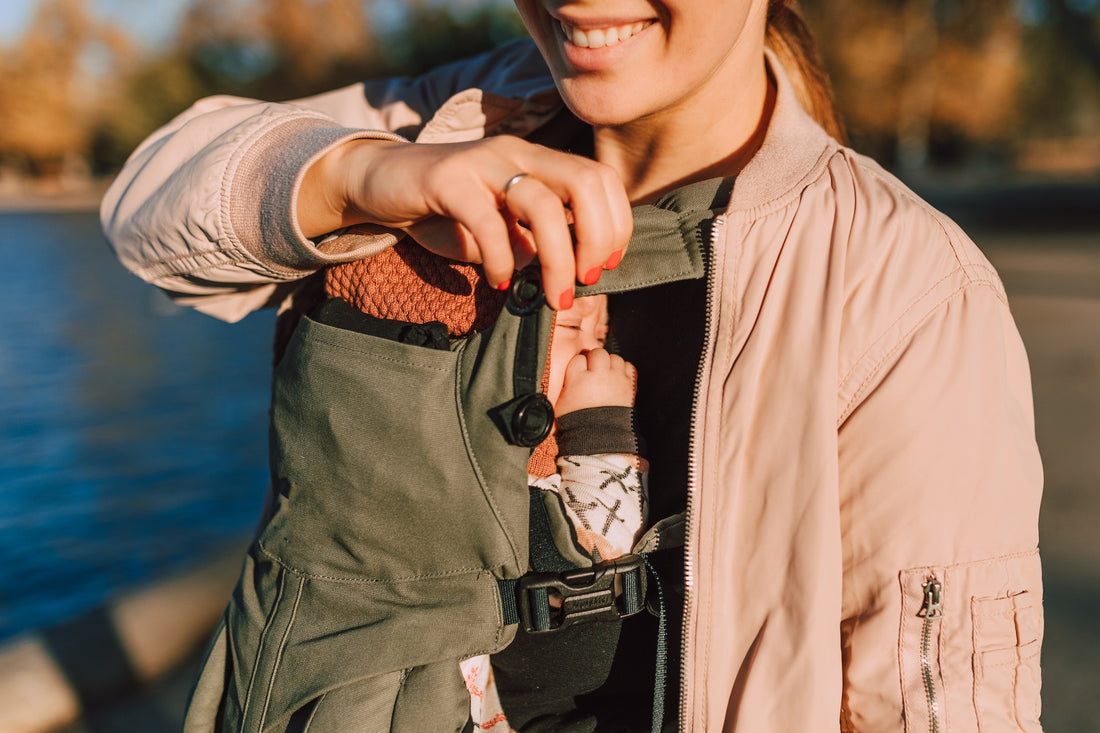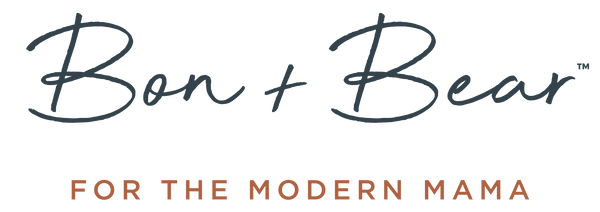
Stay Safe and Cozy: 5 Tips for Babywearing in Cold Weather
As the new year brings fitness and new routines to the front of our minds, babywearing is a great way to do both and get out for long walks to boost your serotonin from sunlight exposure, even if it isn't full sunshine. Just 15 minutes a day can work wonders for your mood and it also helps with the baby's circadian rhythm for more restful sleep and helps with a sleep routine so they understand the difference between day and night.
Babywearing is fast becoming the go-to for modern parents. It involves wearing a baby in a carrier or sling close to the body, allowing for closeness, comfort, and convenience as it's the perfect way to keep baby close while still being hands-free.
Babywearing has numerous benefits for both baby and parent. For babies, it can help with colic, encourage bonding, and provide sensory stimulation. For parents, it can help to reduce stress, promote breastfeeding, and make life easier.
In this blog, we aim to help give you the best advice on safe babywearing in cold weather but also understand how to apply the same principles to warmer weather too. It's super important that babywearing is done safely, both for positioning when carrying, and to avoid overheating.
We hope that these 5 tips will help you confidently carry your baby and banish those January Blues.

Layer your baby's clothing so you can easily adjust the warmth for the temperature.
Babies regulate their temperature best with as few layers as possible next to you, like you would when doing skin-to-skin time - which whilst we are on the subject - is super important in the first 3 months after they are born. It boosts the oxytocin 'love hormone' and in turn helps to encourage your milk supply and respond quickly to feeding cues, therefore feeding regularly and effectively for a healthy growing baby.
Layering clothes is important so you can adjust temperatures as you go. Where possible choose natural, breathable fabrics for all clothing. This will ensure baby is less likely to sweat and overheat.
Add a cardigan over the base layers for extra warmth.
Having items which are easily removable means you can keep both you and your baby more comfortable and even if you are worried they are too hot, without much fuss you can remove a layer and reassess. This is especially handy if they fall asleep and you don't want to disturb them.
Always remember your body will act as a 'layer' as well as your carrier or wrap and will keep your torso warmer than you think. So remember to count you and your wrap as 2 layers from the beginning.
A handy tip I always remember from a health visitor is to check the back of the baby's neck with the back of your finger for warmth, they should feel like a 'warm piece of toast'.
Cover your baby's head, hands and feet.
These are easy ways to keep extremities warm where heat is lost first which is crucial. There is a tendency sometimes to forget about hands and heads when we as adults forget these too, and only realise how cold we are when our hands start to go numb. So as a priority, make this your number one to add once they are in the wrap.
Mittens, hats and socks are really simple to remove, especially when moving from outside to indoors without waking babies up if they fall asleep - plus they look extra cute!
Add a coat over the other layers, on top of your wrap/carrier.
If you are somewhere extremely cold, or even on days in the UK when it does reach below zero, having a coat on top of your baby is helpful if it is windy too.
If your baby is bundled up in a wrap they are likely to not have space for their arms to be out, so you could invest in a zip panel to add to your own coat which you can easily zip up and down, wear an oversized coat you can wrap across you both, or even safety pin a knitted blanket to your own coat.
Avoid pram suits which make it more difficult to put a baby in the optimum hip healthy position.
Following on from our last point, please if you take anything away from this post, avoid Pramsuits! I have seen so many parents this winter already with babies in carriers who are not seated properly, too squashed, hoods over their mouth area and generally looking in discomfort.
The problem is pram suits often ride up the baby's back and bum causing discomfort (they may squirm more or generally be unsettled) as it is bunched up in the carrier, meaning you can't move the baby's limbs into the deep 'm' seat position which is needed for healthy hip development either. In addition, the hoods can also cover their faces which risks suffocation.
Plus, in case you missed the general number one for safe carrying, they are going to overheat with a pram suit on too. So save them for your pram/stroller.
"Most of all, enjoy the extra bonding hands-free time and get out into nature"
It might be daunting thinking of what to dress them in, how to fasten the carrier/wrap, anxiously checking on them every minute that they aren't too hot, or whether their airways are blocked etc. We get it, we have been there too. But the whole point of babywearing is to bond and enjoy these special moments you get with them, so remember to take a moment to pause once you do finally make it out of the house.
-
As long as you check on baby regularly, have removable layers and always follow the T.I.C.K.S safe babywearing rule then there is no reason you can't safely babywear and get out more this January to improve your mood and baby's sleep too.
In case you missed our previous post, take a look at these 4 key benefits of Babywearing in the fourth trimester and beyond and shop our Maine Baby Wrap now.

